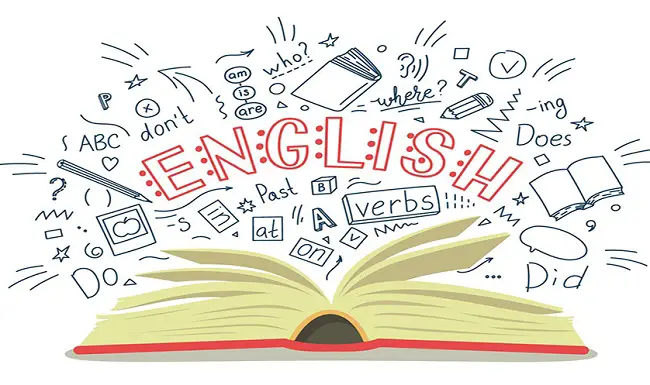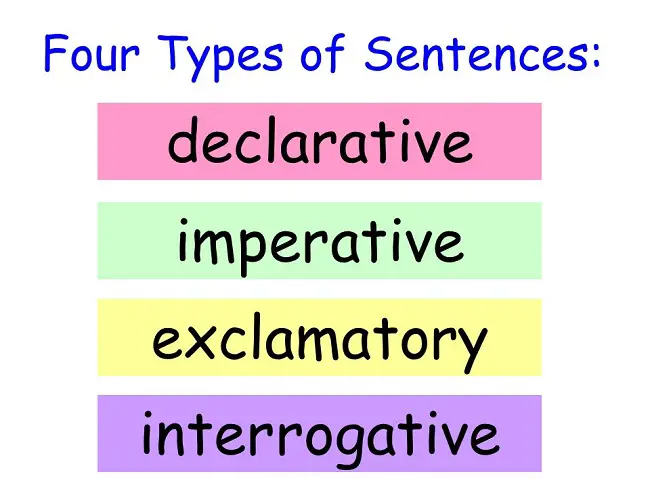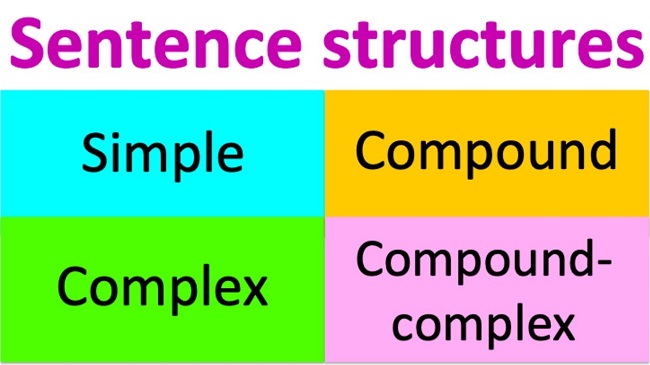Table of Contents
Writing Your First English Sentences
Here is a step by step guide to writing your first sentences in English. Follow each step and your sentence will go from simple to complex. Follow these steps to learn how to write three types of simple sentences and learn about parts of speech.

Understand what subjects and verbs are.
Basic Sentence Structure 1
Write down a subject and the verb to ‘be‘. Here are your possibilities:
I am
You are (1 person)
She is
He is
It is
We are
You are (2 or more people)
They are
you can also use names:
Tom is
Anna and Susan are
Mary is
Choose an adjective. Adjectives are words that describe how something or someone is. Here are some adjectives:
big / small
fat / thin
old / new
old / young
easy / difficult
beautiful / ugly
handsome / ugly
fast / slow
funny / boring
interesting / boring
tall / short
intelligent / stupid
Combine your subject with ‘to be‘ with an adjective to write your first complete sentence! Here are some examples:
I am old.
You are young.
She beautiful.
He is thin.
It is new.
We are tall.
You are intelligent.
They are fast.
Basic Sentence structure 2
Write down a subject and the verb ‘to be‘ as you did above.
I am
You are (1 person)
She is
He is
It is
We are
You are (2 or more people)
They are
Choose a noun. Nouns are objects, people, places, jobs at work – in other words the things we find in the world. Let’s begin with what people are. People can be:
doctor
student
banker
teacher
lawyer
Combine the subject and ‘to be‘ with the noun. Place ‘a‘ before the noun when it is one person. Use ‘s‘ at the end of the word if there are two people or more.
I am a teacher.
You are a student.
He is a lawyer.
She is a doctor.
We are teachers.
You are students.
They are doctors.
For things, you can use other nouns. Remember to place ‘a’ before the noun if it is one, or add ‘s’ if there are more than one.
It is a book.
It is a computer.
It is a house.
They are cars.
They are bikes.
They are candles.
Congratulations! Now you can write two types of sentences. Let’s review:
I am tall. I am a student.
You are funny. You are a teacher.
He is fat. He is a banker.
It is difficult. It is a test.
She is beautiful. She is a student.
We are intelligent. We are students.
You are young. You are lawyers.
They are thin. They are doctors.
They are expensive. They are cars.
Basic Sentence structure 3
Combine the two sentences to make a third type of sentence. It’s easy! Take the adjective and place it before the noun after ‘a’. Now you have a third type of sentence. Let’s use the sentences from before:
I am tall. I am a student. -> I am a tall student.
You are funny. You are a teacher. -> You are a funny teacher.
He is fat. He is a banker. -> He is a fat banker.
It is difficult. It is a test. -> It is a difficult test.
She is beautiful. She is a student. -> She is a beautiful student.
We are intelligent. We are students. -> We are intelligent students.
You are young. You are lawyers. -> You are young lawyers.
They are thin. They are doctors. -> They are thin doctors.
They are expensive. They are cars. -> They are expensive cars.
Congratulations on completing the first step to writing sentences in English. Next, learn how to use verbs such as play, go, cook, eat, sleep, work, and more.

Writing Sentences for Beginners
Use these patterns to start writing sentences in English
Here are four types of sentences to begin writing in English. Follow the example in each type of sentence. Learn these symbols to understand each type of sentence. These symbols represent parts of speech in English. Parts of speech are the different types of words in English.
Key to Symbols
S = subject
Subjects include I / you / he / she / it / we / they and names of people: Mark, Mary, Tom, etc. or types of people: children, students, parents, teachers, etc.
V = verb
Simple sentences use the verb ‘be’ such as: I am a teacher. / They are funny. Verbs also tell us what we do: play / eat / drive etc. or what we think: believe / hope / want etc.
N = noun
Nouns are objects such as books, chair, picture, computer, etc. Nouns have singular and plural forms: book – books, child – children, car – cars, etc.
Adj = Adjective
Adjectives tell how someone or something is. For example: big, small, tall, interesting, etc.
Prep P = Prepositional phrase
Prepositional phrases tell us where someone or something is. Prepositional phrases are often three words and begin with a preposition: For example: in the house, at the store, on the wall, etc.
() = Parentheses
If you see something in parentheses () you can use the type of word, or leave it out.
1. Sentences with Nouns
Here is the first type of easy sentence. Use the verb ‘to be’. If you have one object, use ‘a’ or ‘an’ before the object. If you have more than one object, don’t use ‘a’ or ‘an’.
S + be + (a) + N
I am a teacher.
She is a student.
They are boys.
We are workers.
Exercise: Five Sentences with Nouns
On a piece of paper write five sentences using nouns.
2. Sentences with Adjectives
The next type of sentence uses an adjective to describe the subject of a sentence. Do not use ‘a’ or ‘an’ when the sentence ends in an adjective. Do not change the form of the adjective if the subject is plural or singular.
S + be + Adj
Tim is tall.
They are rich.
This is easy.
We are happy.
Exercise: Five Sentences with Adjectives
Use adjectives to write five sentences.
3. Sentences with Adjectives + Nouns
Next, combine the two types of sentences. Place the adjective before the noun it modifies. Use ‘a’ or ‘an’ with singular objects, or nothing with plural objects.
S + be + (a, an) + Adj + N
He is a happy man.
They are funny students.
Mary is a sad girl.
Peter is a good father.
Exercise: Five Sentences with Adjectives + Nouns
Use adjectives + nouns to write five sentences.
4. Add Prepositional Phrases to Your Sentences
The next step is to add short prepositional phrases to tell us where someone or something is. Use ‘a’ or ‘an’ or use ‘the’ before a noun or adjective + noun if the object is singular and specific. ‘The’ is used when something specific is understood by the person writing and the person reading the sentence. Notice that some sentences are written with adjectives and nouns, and others without.
S + be + (a, an, the) + (adj) + (N) + Prep P
Tom is in the room.
Mary is the woman at the door.
There is a book on the table.
There are flowers in the vase.
Exercise: Five Sentences with Prepositional Phrases
Use prepositional phrases to write five sentences.
5. Using Other Verbs
Finally, use other verbs than ‘be’ to express what happens or what people think.
S + V + (a, an, the) + (adj) + (N) + (Prep P)
Peter plays the piano in the living room.
The teacher writes sentences on the board.
We eat lunch in the kitchen.
They buy food at the supermarket.
Exercise: Five Sentences with Prepositional Phrases
Use other verbs to write five sentences.
Sentence Type Basics for English Learners
Writing in English begins with a sentence. Sentences are then combined into larger structures such as essays, business reports, etc. There are four sentence types in English. The first sentence type is the most common:

Declarative
A declarative sentence “declares” or states a fact, arrangement or opinion. Declarative sentences can be either positive or negative. A declarative sentences ends with a period (.).
Examples
I’ll meet you at the train station.
The sun rises in the East.
He doesn’t get up early.
Imperative
The imperative form instructs (or sometimes requests). The imperative takes no subject as ‘you’ is the implied subject. The imperative form ends with either a period (.) or an exclamation point (!).
Examples
Open the door.
Finish your homework
Pick up that mess.
Interrogative
The interrogative asks a question. In the interrogative form the auxiliary verb precedes the subject which is then followed by the main verb (i.e., Are you coming ….?). The interrogative form ends with a question mark (?).
Examples
How long have you lived in France?
When does the bus leave?
Do you enjoy listening to classical music?
Exclamatory
The exclamatory form emphasizes a statement (either declarative or imperative) with an exclamation point (!).
Examples
Hurry up!
That sounds fantastic!
I can’t believe you said that!
English Sentence Types
All of these sentence types further fall into four basic sentence type categories in English.
- Simple
- Compound
- Complex
- Compound – Complex

Simple Sentences
Simple sentences contain no conjunction (i.e., and, but, or, etc.).
Examples
Frank ate his dinner quickly.
Peter and Sue visited the museum last Saturday.
Are you coming to the party?
Compound Sentences
Compound sentences contain two statements that are connected by a conjunction (i.e., and, but, or, etc.).
Examples
I wanted to come, but it was late.
The company had an excellent year, so they gave everyone a bonus.
I went shopping, and my wife went to her classes.
Complex Sentences
Complex sentences contain a dependent clause and at least one independent clause. The two clauses are connected by a subordinator (i.e, which, who, although, despite, if, since, etc.).
Examples
My daughter, who was late for class, arrived shortly after the bell rang.
That’s the man who bought our house
Although it was difficult, the class passed the test with excellent marks.
Compound – Complex Sentences
Compound – complex sentences contain at least one dependent clause and more than one independent clause. The clauses are connected by both conjunctions (i.e., but, so, and, etc.) and subordinators (i.e., who, because, although, etc.)
Examples
John, who briefly visited last month, won the prize, and he took a short vacation.
Jack forgot his friend’s birthday, so he sent him a card when he finally remembered.
The report which Tom complied was presented to the board, but it was rejected because it was too complex.





this lesson is great.
thank you.
Thanks for visiting our site.
Really, its great lesson especially, for begginers.